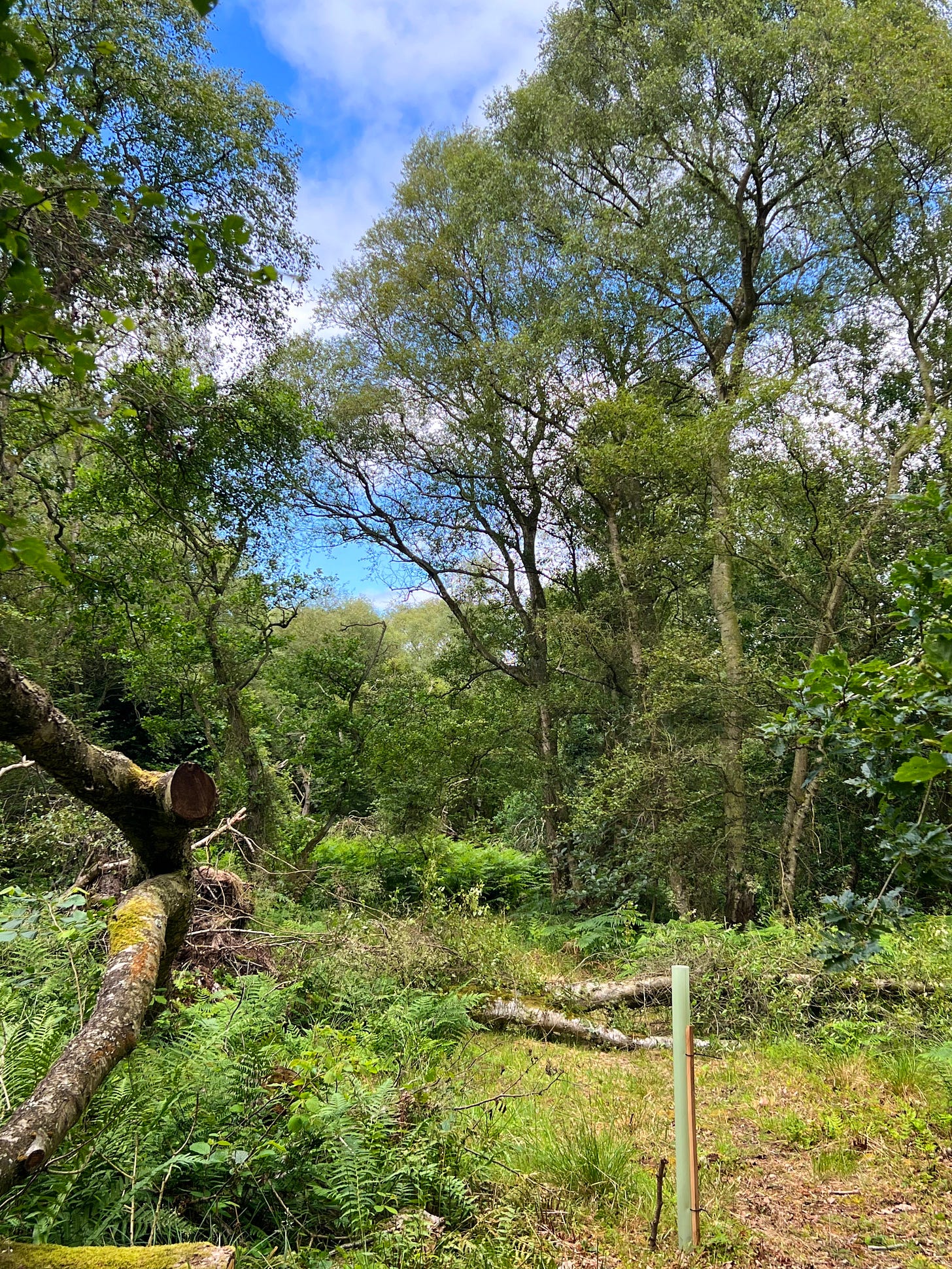The battered oak - a windfallen birch smashes up an already smashed up oak tree.
A few days before I was about to do my windfall ticket I was at the woods, looking at all the trees I'd do once passed the course. I had one set of trees in mind. But then they fell in a moderate wind
Looking above the path you can see a birch tree that became windblown a few years ago. The only thing stopping it from falling to the ground is a rather stout oak tree and you can see some of its foliage in the right hand foreground.

It was supposed to be there for a while, as I thought I had plenty of time to deal with it. I was wrong. Three days later, when we returned to the woodland, this same section of path looked like this. The god damn birch, had only gone and god damn fallen to the god damn ground.

Not only was the birch on the ground, but it has also taken out massive section of canopy limbs from the oak that was supporting it. The torn limbs on the left hand side are fresh damage. The torn limbs in the centre and lower right were existing damage. The oak hasn’t been fairing well at all. In two separate incidents in recent years it has lost two large sections of its canopy.

Needless to say, this oak needed a little bit of TLC. Oaks are hardy things and takes a lot to kill a mature oak, but I wanted to stack the deck in its favour. The tears in the limbs expose heartwood and xylem tissue that pests and diseases will flock towards as a source of food, shelter and reproduction. However, as a human capable of thwarting pests and diseases and their plans, I’ve devised a small plan of works to repair the oak tree as best as I can and I will do this once I’ve cleared up the birch.
The plan is pretty basic - I’m going put clean cuts on the torn tissues to minimise the surface area for ingress of pests and diseases. These correctly located pruning cuts perform two functions. Firstly, the smaller surface area would make it easier and faster for the oak to seal up the wound and harder for pests and diseases to get a hold in the tissue. Secondly, it would cause the oak to respond with new growth shoots, which would eventually (measuring in decades) give it a new canopy. It’d also give me something to prune each year for next twenty years or so years.
Climbing into the tree with ropes is the only way I can do this work. Getting up into the tree with ropes is always a slow process as I am relatively new to climbing. I have not yet sat my “tree climbing and aerial rescue” certification or “using a chainsaw from a rope and harness” certification. Don’t get me wrong, I’ve had almost a years worth of training in climbing and about four months in using a chainsaw from a rope and harness but we don’t do the formal exams (NPTC assessments) until the second year at treeschool. The main things I’m considering when ascending a tree such as this is the structural integrity. You need to be reasonably certain that the limb is able to support the forces you’ll load it with (it as well as a safety factor) and have a secondary climbing system (aka second rope) in place to minimise risk should the primary system fail.
My plan in pruning the oak is to make the following cuts, which I’ve added as yellow lines.
This plan has been made on the ground and no doubt location of the cuts may change once I am up in the tree. My aims are to take only enough to clean up and stimulate growth, but, the cuts have to be made in the right places and the right places are hard to ascertain from the ground. It’s a balancing act.
First things is first though. I need to deal with birch that’s blocking the path and that’s another job for another day. The bright side of it is - more firewood.
Thanks for reading,
Jamie.



Have you considered potentially monolithing it and actually cut some holes in it to encourage decay to allow it to harbour lots of wildlife.
Similar to what we talked about with Adam in the first term one time if that makes any sense.
It might just bring some more biodiversity to the woodland